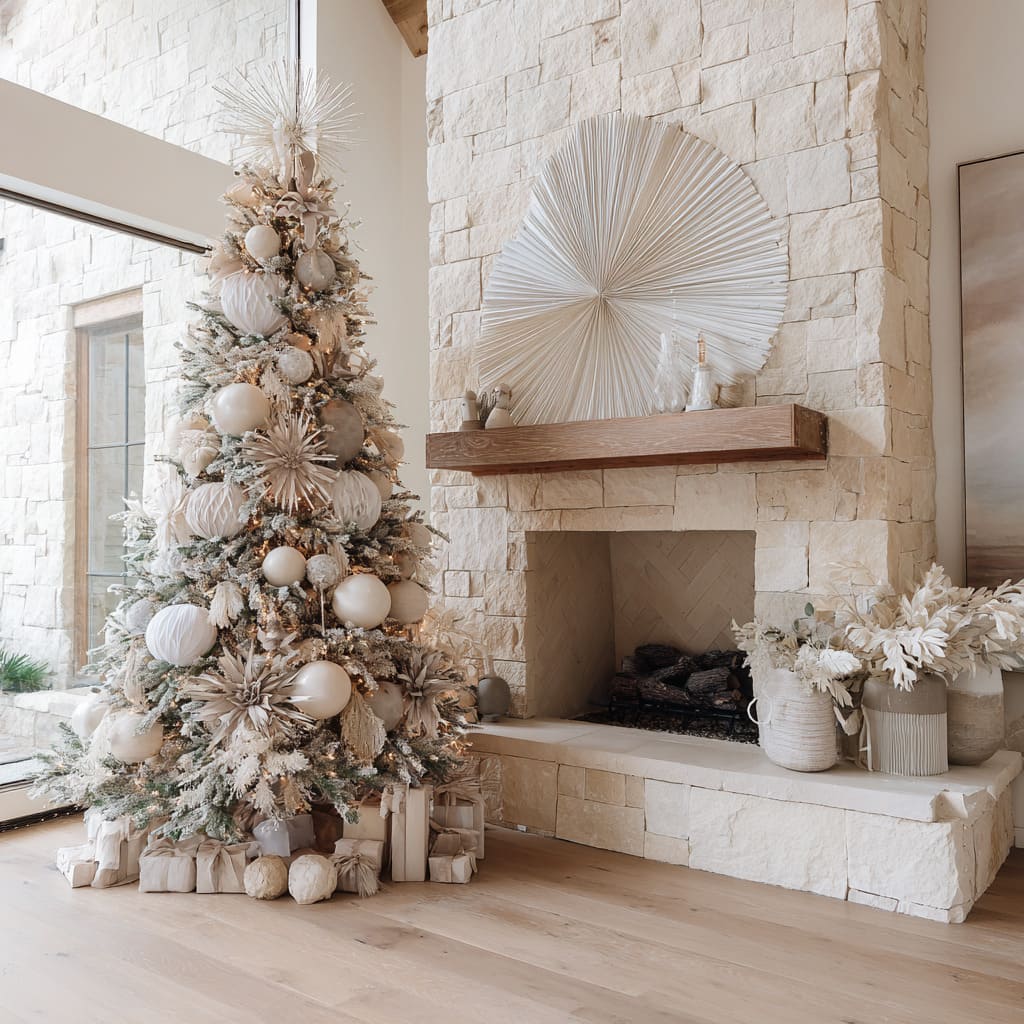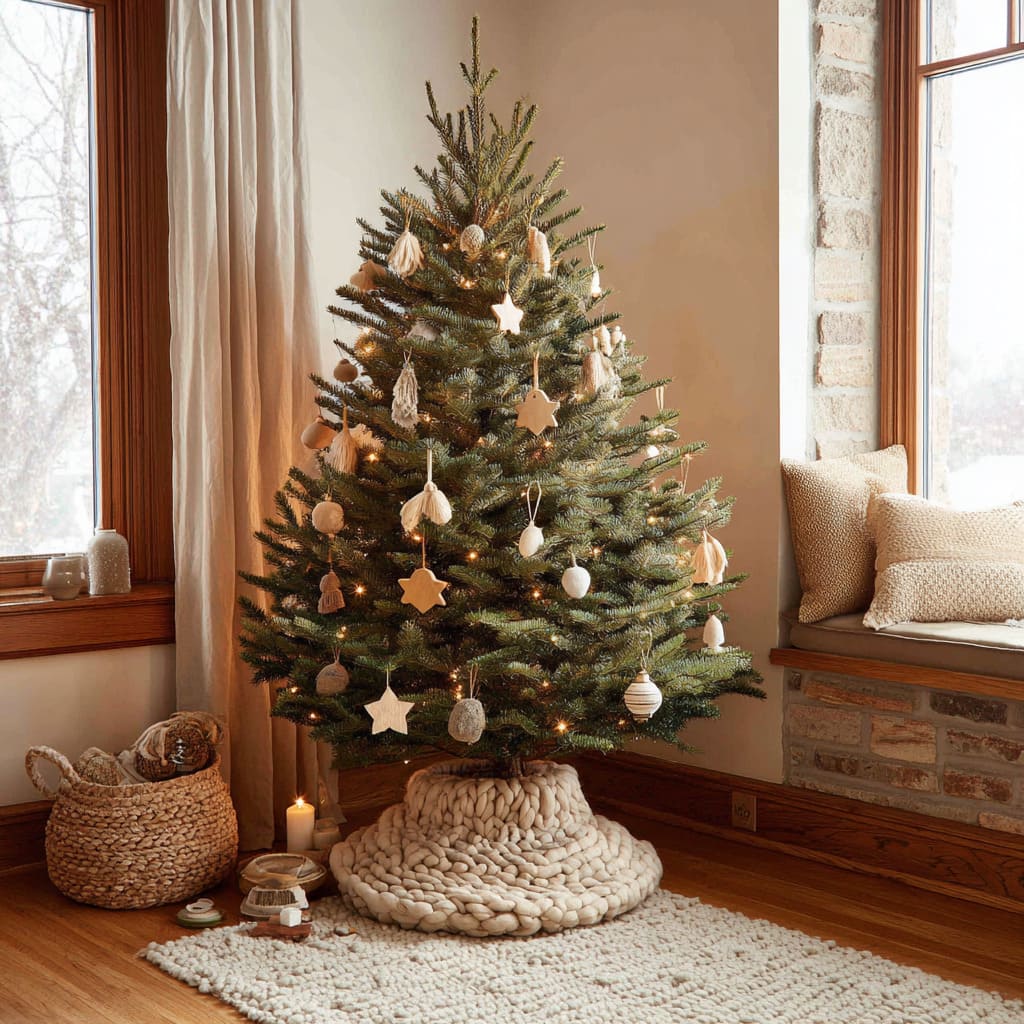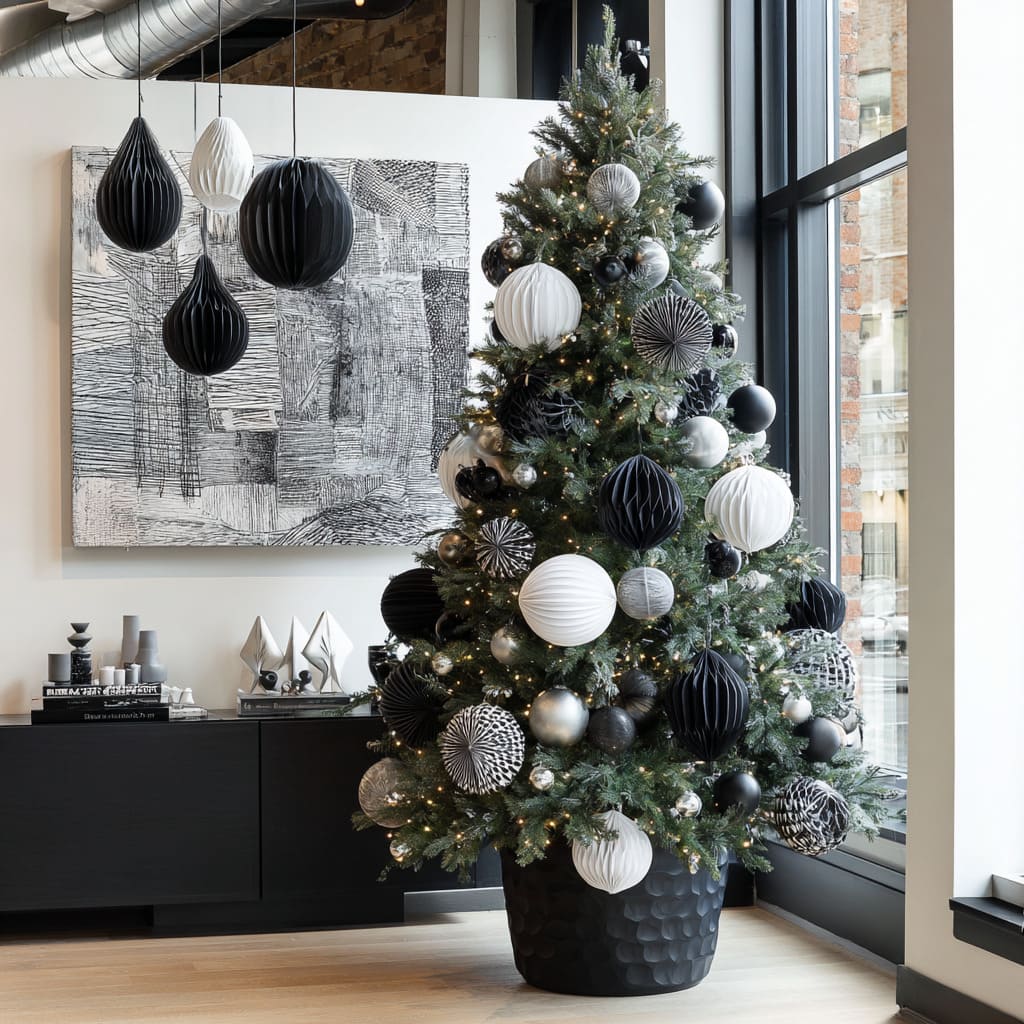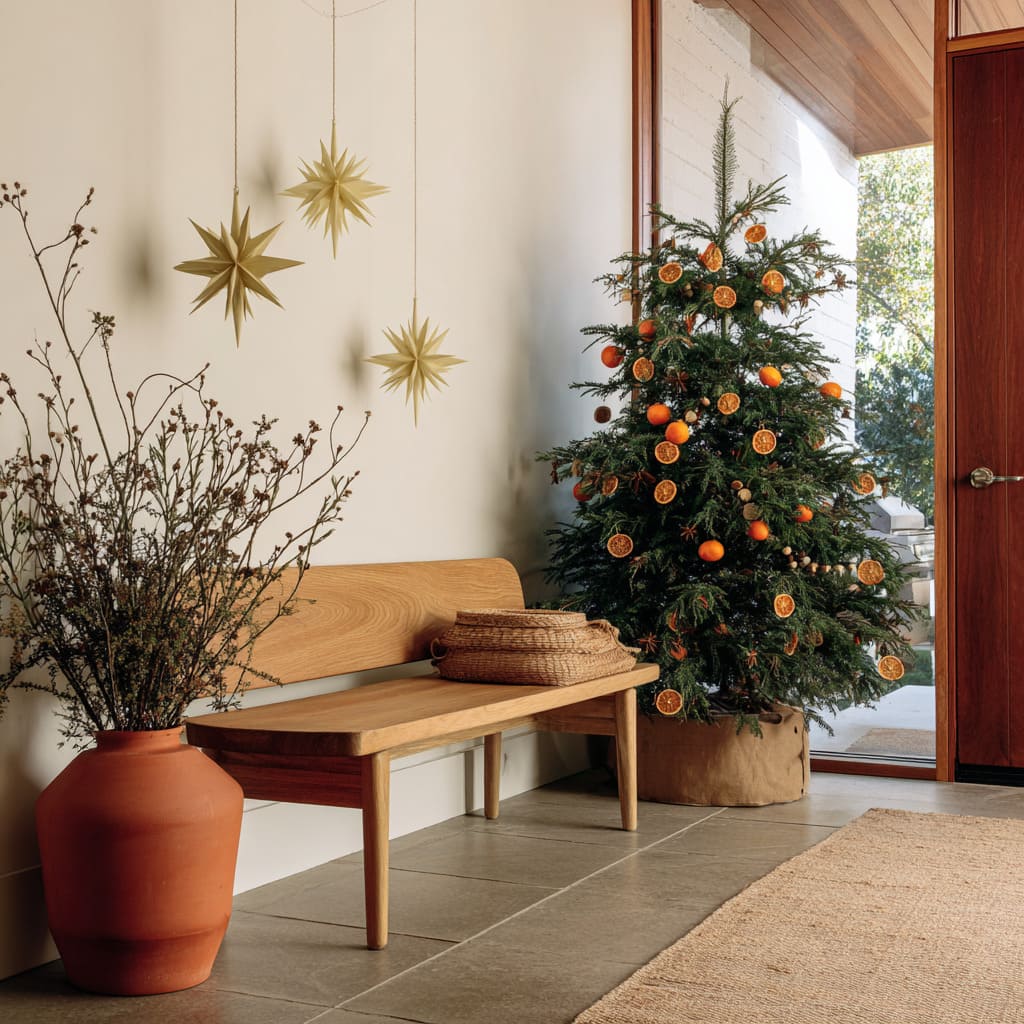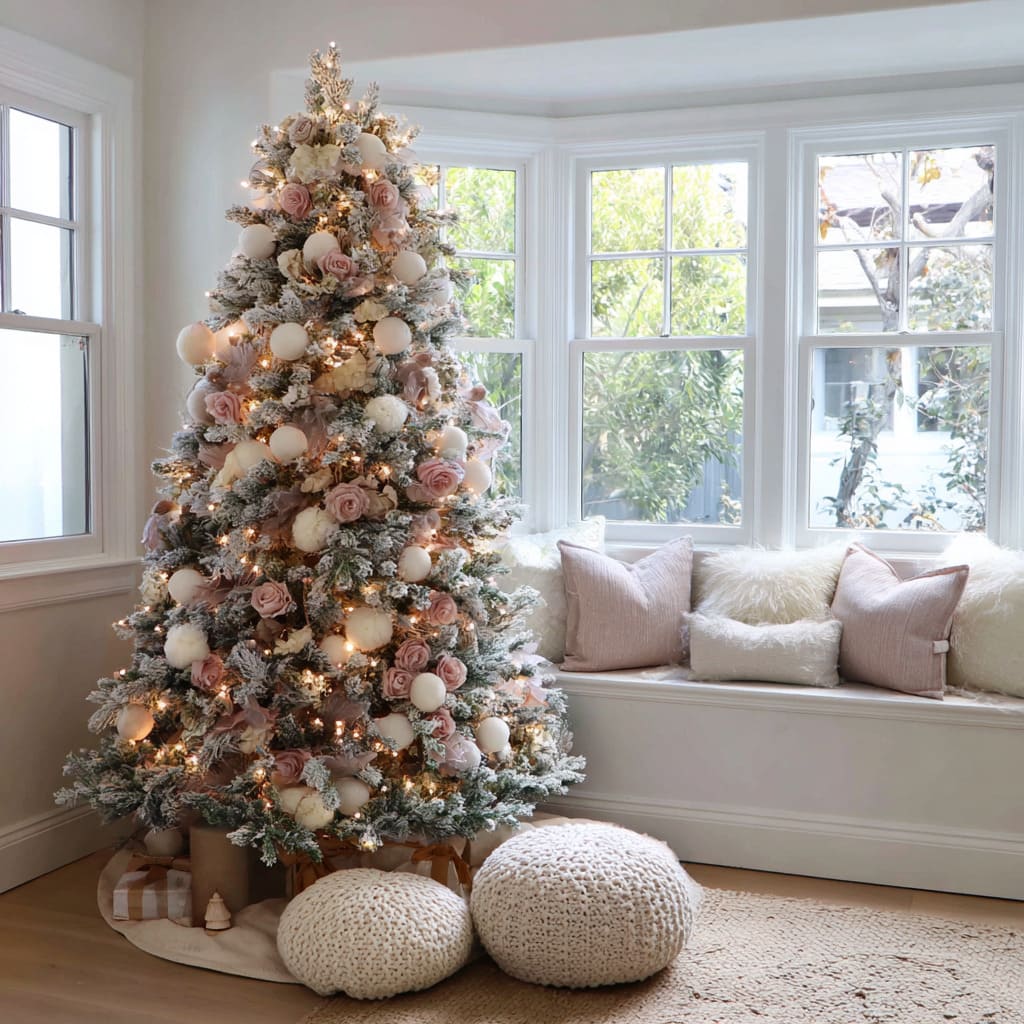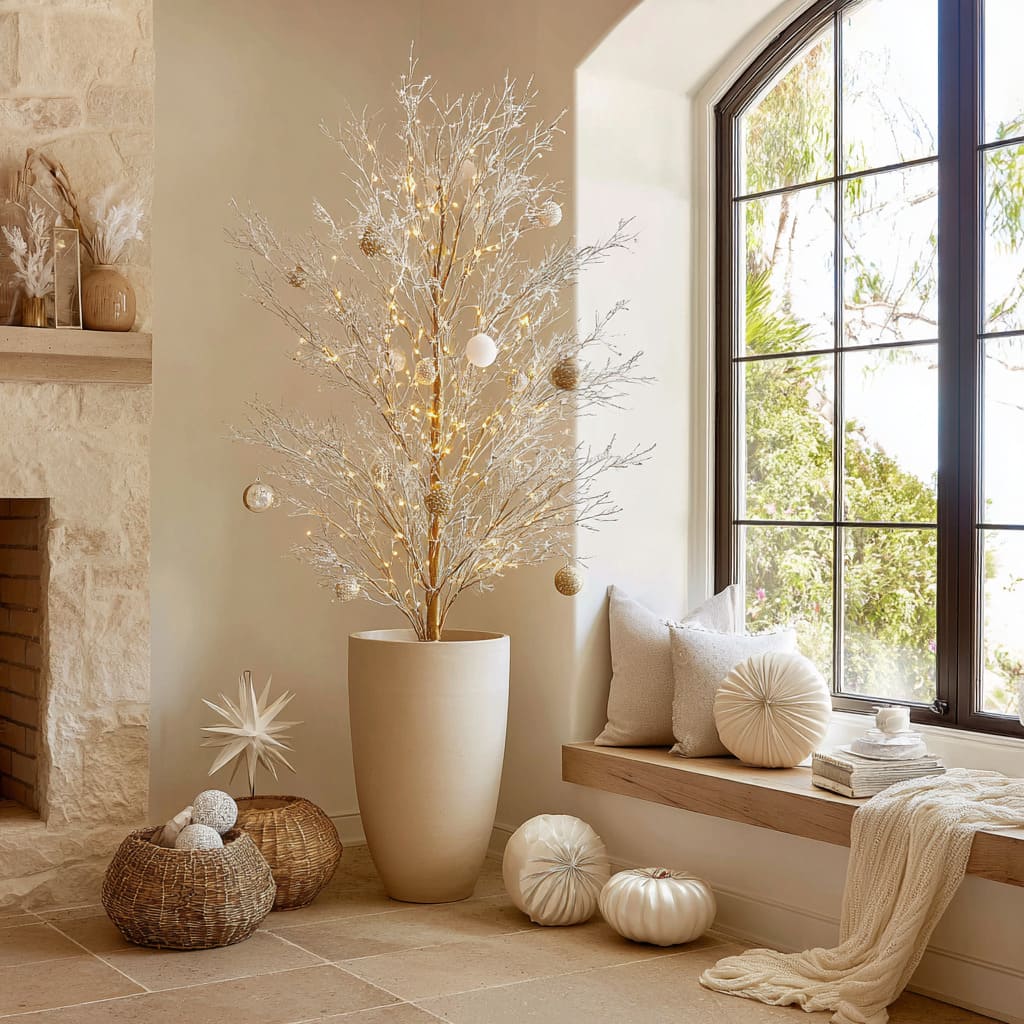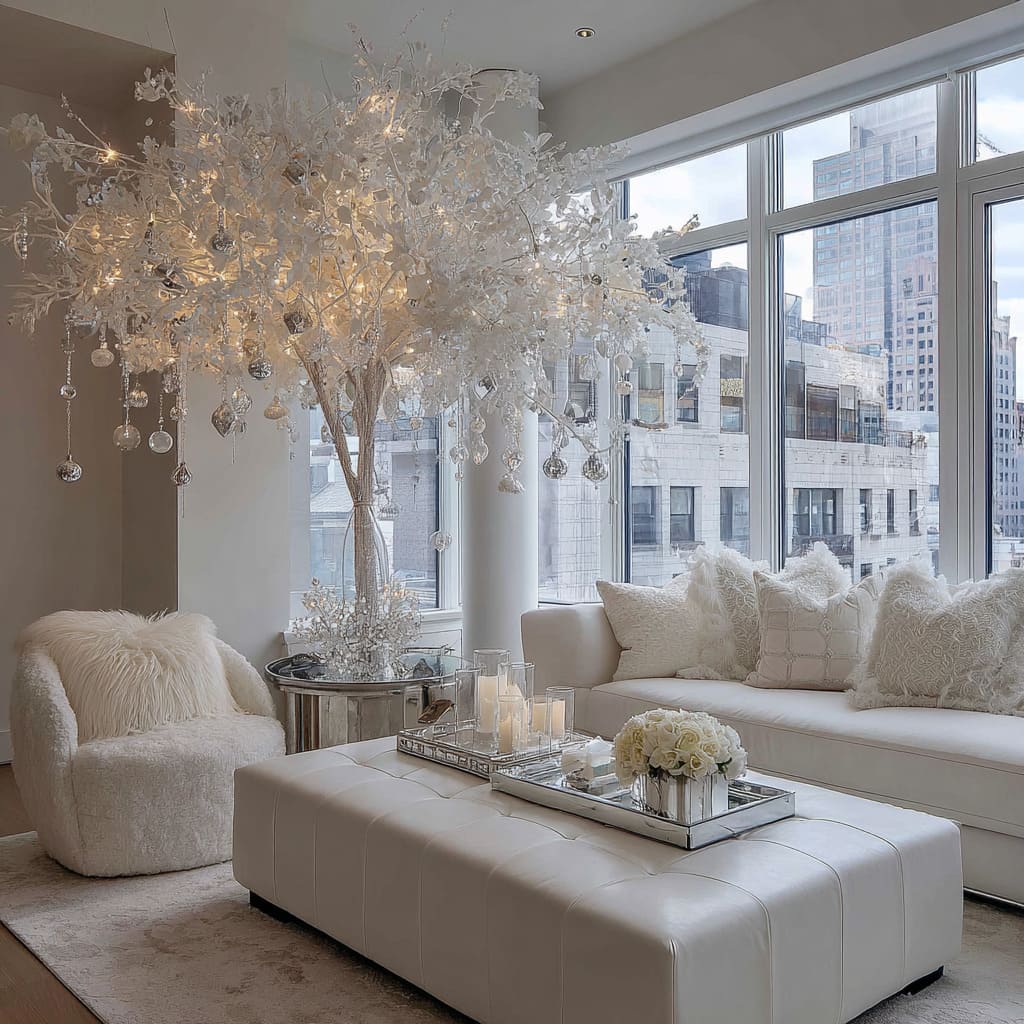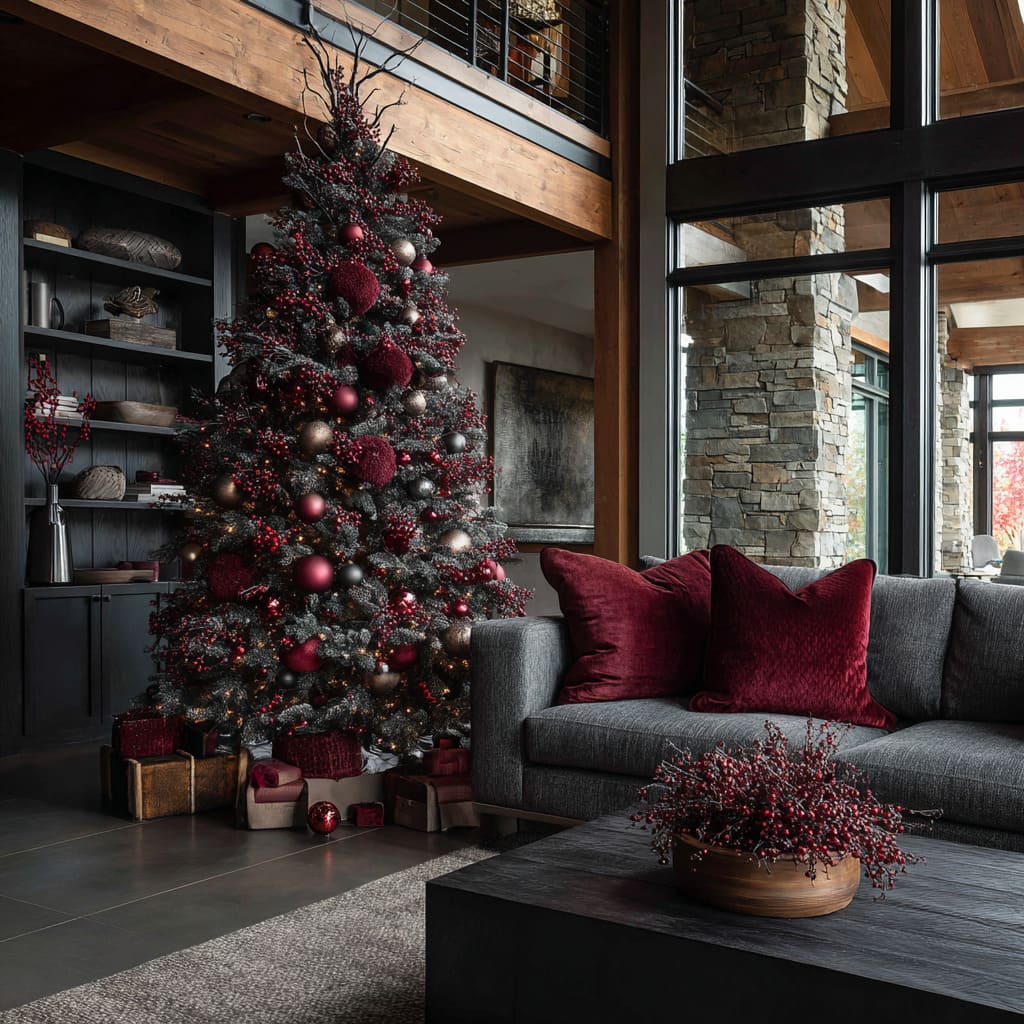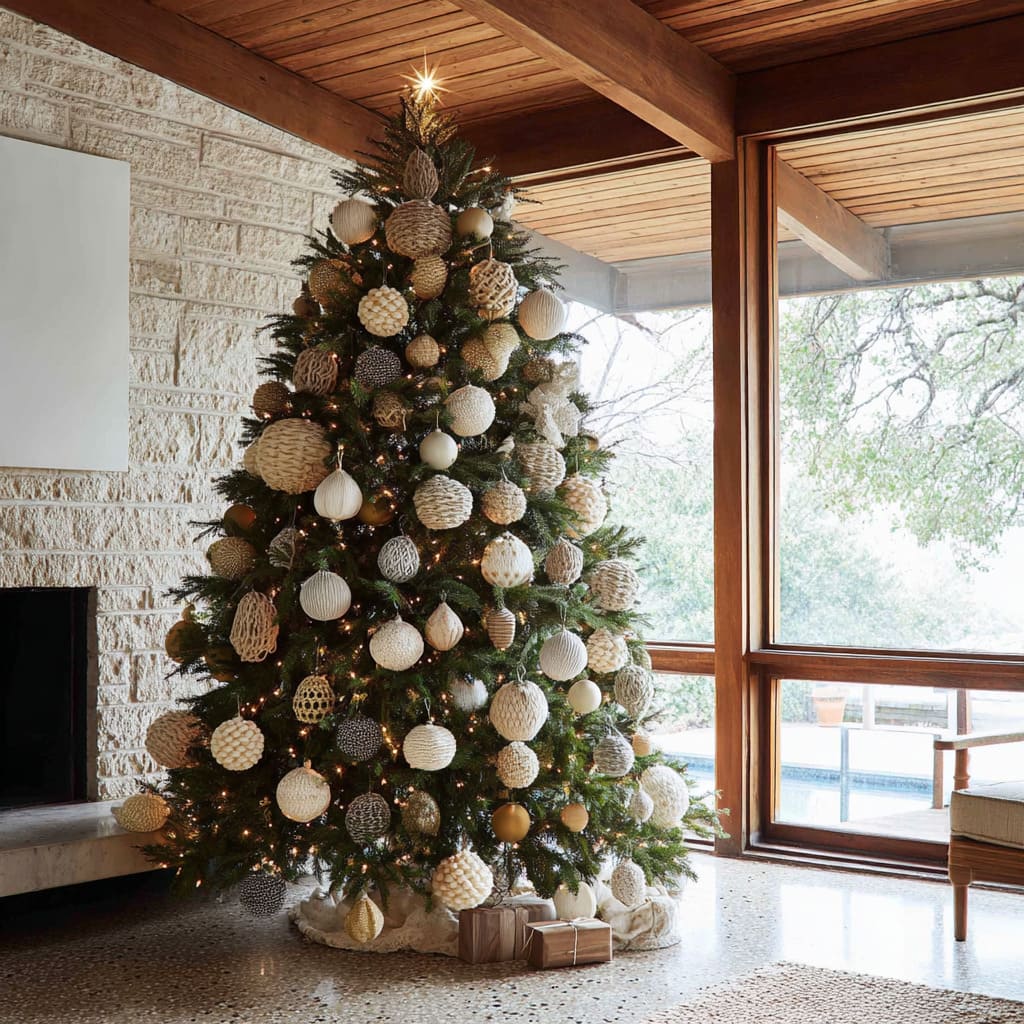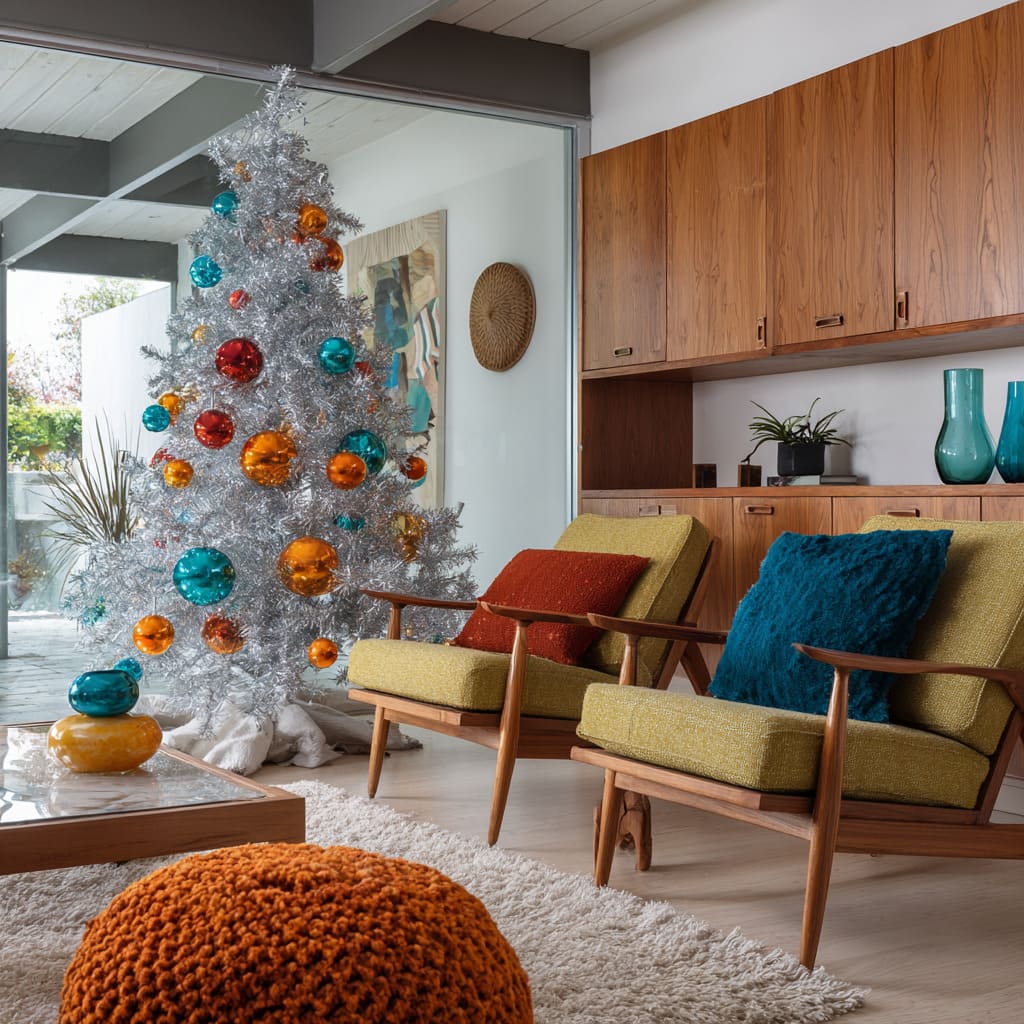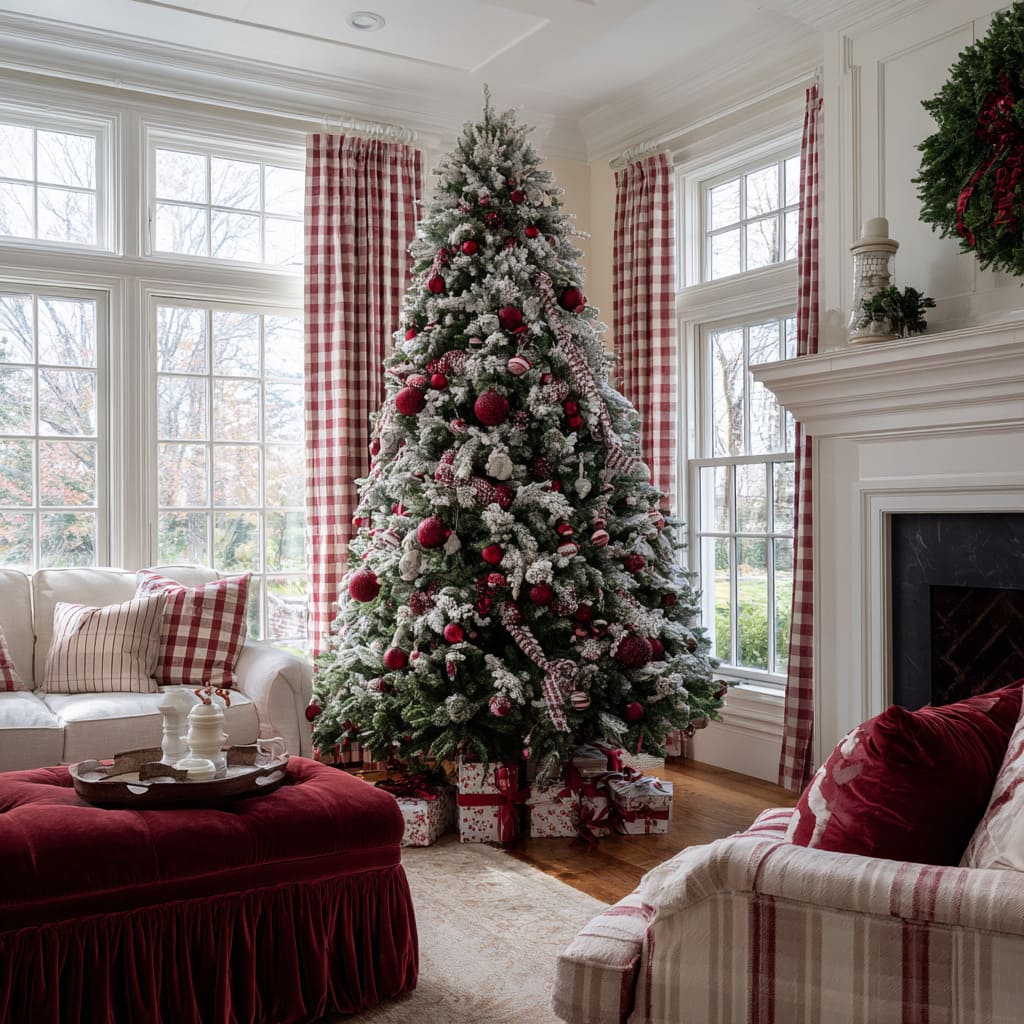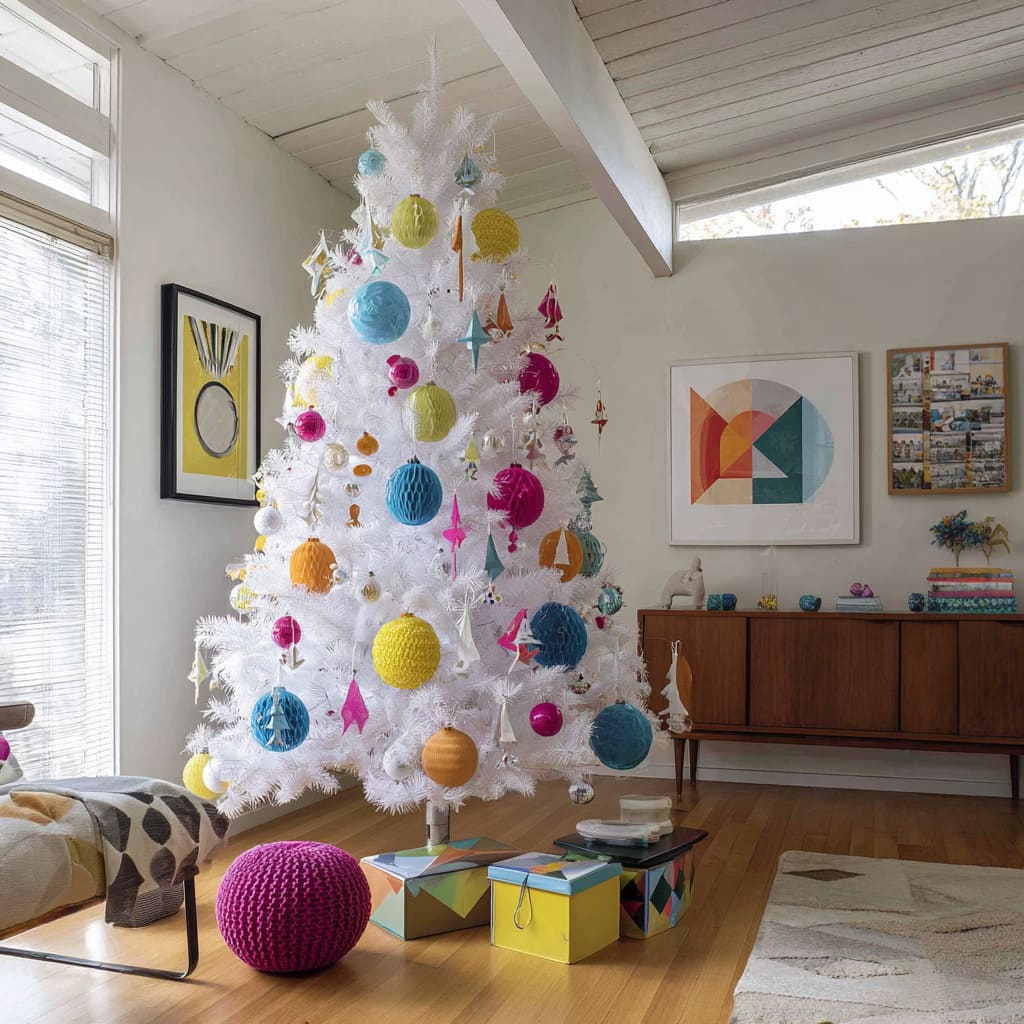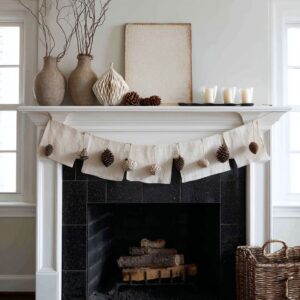Modern Christmas tree designs have shifted from simple decorations into immersive sculptural highlights. By exploring how shape, shade, and position interact, hidden design moves come to light.
This article uncovers the visual intelligence at play: how ornaments cast soft rhythms, how branches form bold profiles, and how textures layer to define the mood. Whether drawn from Christmas tree decorating ideas in sleek apartments or quiet cottages, these concepts reveal how each element ties to its surroundings in surprising ways.
Sculptural Silhouettes and Topper Reinventions
Modern displays often swap the traditional star or angel for organic fanbursts, twig sprays, or pampas plumes.
In darker palettes, blackened twigs push through branch clusters, while in softer tones, dusty rose plumes break the cone’s edge, creating asymmetrical flares that mirror nearby architecture—imagine lodge beams or draped fabrics.
In some ideas, cascades of white foliage form a sweeping canopy, turning the arrangement into a horizontal sculpture rather than a simple pine. These bold moves unify form and setting and point to fresh Christmas tree ideas that let each tree feel rooted in its space.
Strategic Ornament Placement and Hidden Lines
More than simple draping, ornaments are arranged in purpose-driven clusters that guide the eye along hidden pathways. In one approach, baubles appear in vertical trios, echoing skyscraper mullions just beyond floor-to-ceiling windows and weaving a subtle city grid into the tree’s profile.
Elsewhere, a deliberate concentration of gold spheres on the outer third creates a moment of negative space, inviting the gaze to rest before following the next grouping.
Oversized black-and-white forms mirror nearby wall art, establishing an unspoken visual dialogue that links tree and room. These Xmas tree ideas harness spacing, scale, and alignment to add depth and movement—proof that where ornaments sit can be as impactful as what they are.
Texture as Core Design Language
Shifting away from metallic gleam, many tree designs turn to tactile finishes for their main effect. Felt stars and crocheted spheres offer a soft, inviting touch, while carved clay pieces bring an organic weight.
Layers of matte copper, velvety reds, and charcoal-frosted needles stack through finish contrast rather than shine, creating a multi-dimensional surface.
Pleated paper discs, woven raffia accents, and natural fiber sprays cast shifting shadows that dance with each flicker of light. In select minimalist Xmas tree ideas, this interplay of texture becomes the centerpiece, transforming a holiday display into a living study of material and form.
Sophisticated Color Dialogues
Color approaches move far past familiar green-red-gold mixes. In refined settings, gold, champagne, and cream flow together in a seamless gradient that mirrors fading daylight on glass facades.
A navy-and-copper pairing balances cool and warm metals, with ribbons folded like soft fabric sculptures instead of flat bands.
Bright accents—clusters of cobalt, hot pink, and lime—stand out against generous swaths of blank branch space, each hue punctuating the scene without crowding it. In quieter interiors, heavy flocking acts as a gentle backdrop, letting blush and lilac tones surface gradually among the boughs.
These Xmas tree color ideas showcase how careful shade choices and contrast create mood and movement, turning a tree into a living color study rather than a mere holiday symbol.
Light as Material, Not Merely Illumination
Lighting becomes part of the form rather than a separate layer. Thick, warm strands drape around lower branches like gathered organza, tracing the tree’s natural curves.
In minimalist Xmas tree ideas, tiny bulbs tucked at branch joints cast pinpoint glows, highlighting structure over sparkle.
Deep placements allow foliage to radiate from within, as though the tree itself were luminescent. Uneven clusters of lights yield pockets of brightness and shadow, weaving a quiet pattern across the silhouette.
By treating light as a design element, each glow interacts with finishes—semi-matte ornaments catch soft reflections and mesh ribbons scatter gentle halos—resulting in an immersive display that reads like an atmospheric installation. These refined Christmas theme tree ideas draw on general inspirations in modern interiors, where lighting shapes the entire visual narrative.
Base Treatments and Environmental Echoes
Tree bases are freed from plain skirts and become key design moments. A brushed brass cylinder mirrors soft light from nearby windows, bringing urban glow down to the floor.
Chunky knit baskets add a cozy anchor of fiber, echoing wool throws or area rugs. A matching satin skirt wraps the trunk like a sleek collar, reinforcing metallic accents overhead.
Simple kraft-paper wraps tie back to dried citrus and wooden bead garlands in farmhouse nooks.
These base treatments link back to hardwood floors, woven upholstery, or stone hearths, so each tree feels embedded in its setting rather than dropped in. Letting the base pick up motifs from the room—color, material, and texture—completes the visual narrative.
Negative Space and Spatial Dialogue
Blank areas around and within the foliage become part of the show. Tree designs shaped with a wind-blown profile use open pockets to let sparse ornaments seem to float, heightening each bauble’s presence.
In a monochrome setting, matte spheres are given wide gaps—creating a tension that echoes nearby abstract art or minimalist furnishings.
Long ribbon panels drape vertically, allowing glimpses of crisp walls or stone surfaces beyond, softening the cluster of branches. This play between filled and empty lets the eye rest and then roam, weaving between tree and room.
By treating the space around each branch as a design element, the tree invites the surrounding architecture to join in the festive display.
Material Juxtaposition and Unexpected Pairings
Mixing crisp frosted white needles with champagne-glass baubles and matte starburst ornaments brings together gleam and texture in a nod to mid-century flair. Nearby, pleated paper elements nestle beside felted wool spheres, each casting its own pattern of light and shadow across branches.
In more organic atmospheres, dehydrated citrus slices are threaded through wooden beads, swapping reflective surfaces for tactile warmth and leaning on daylight and surrounding textiles to carry the scene. These pairings turn a single tree into a layered showcase of surface contrasts, where unexpected materials create a fresh conversation between soft and sculptural.
Conclusion
Through these explorations, holiday evergreens evolve into sculpted installations rather than mere seasonal accents. Rethinking shape, placement, material, and shade lets each display blend with its surroundings.
The true magic lies in the interplay of empty space and ornament clusters, natural fibers and metallic touches, gentle glow and nods to architecture. In this way, the Christmas tree becomes both a festive icon and an integral piece of interior style, proving that deliberate detail can transform tradition into living art.

